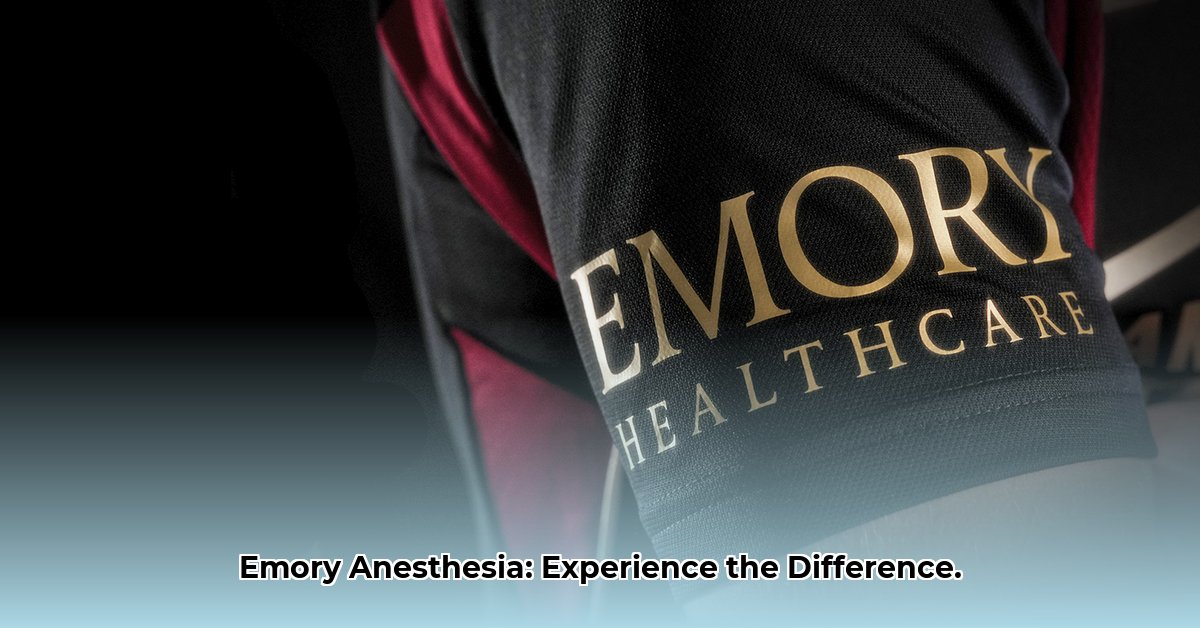
Emory Specialty Associates (ESA) delivers anesthesia services using a multidisciplinary team approach, integrating anesthesiologists, Certified Registered Nurse Anesthetists (CRNAs), and Anesthesia Assistants (AAs) for comprehensive perioperative care. This model aims to improve patient outcomes and resource utilization. For more information on anesthesia team models, see this resource. This article analyzes ESA's workforce composition, perioperative care delivery, and associated implications, offering actionable intelligence for stakeholders.
Workforce Composition: A Coordinated Team
ESA's anesthesia care relies on a tiered team structure. Anesthesiologists (MDs or DOs with anesthesiology residency), lead the team, overseeing care and handling complex cases. CRNAs (MSN, CRNA certification) administer anesthesia and manage patient care under the supervision of anesthesiologists. AAs, with formalized training, assist both anesthesiologists and CRNAs. This structure allows for efficient task delegation and optimized resource utilization.
(Figure: A flowchart illustrating the hierarchical structure and reporting relationships within the ESA anesthesia team. This visual would clearly delineate roles and responsibilities.)
Perioperative Care Delivery: Seamless Collaboration
ESA's perioperative care emphasizes seamless collaboration. The team works together to manage patient care across all phases (preoperative, intraoperative, and postoperative), regardless of procedure complexity. Efficient communication is crucial, particularly during emergencies, requiring well-defined protocols and rapid response mechanisms. This collaborative model facilitates a streamlined workflow and adaptability to changing circumstances.
Analysis and Discussion: Strengths and Challenges
ESA's model offers potential benefits: cost-effectiveness through optimized resource utilization, increased efficiency through better coordination, and improved patient outcomes due to enhanced care collaboration. However, challenges exist. Precise allocation of liability among team members requires clear protocols and robust documentation to minimize the risk of medical errors and legal complications. Moreover, further research is needed to comprehensively quantify the model's benefits and identify areas for improvement. While anecdotal evidence is positive, rigorous data collection on patient outcomes is crucial for a complete assessment.
Actionable Intelligence: Recommendations for Stakeholders
The following recommendations aim to enhance ESA's system and maximize its potential:
ESA Administration: Implement a performance dashboard tracking key metrics (efficiency, patient safety, costs). Invest in data analytics, explore telehealth integration, and optimize workflows for long-term improvement.
Anesthesiologists: Develop detailed collaboration protocols, prioritize open communication and transparency, and implement mentorship programs for junior anesthesiologists.
CRNAs & AAs: Focus on continuing education in advanced procedures, participate in risk management training, and advocate for expanded practice authority within their scope.
Emory Healthcare: Conduct cost-benefit analyses comparing perioperative care models, and develop innovative reimbursement models reflecting the value of this multidisciplinary approach.
Regulatory Bodies: Regularly review and update anesthesia care delivery standards and adapt licensing regulations to reflect technological advancements and evolving roles.
Risk Assessment: Proactive Mitigation Strategies
A proactive risk management approach is crucial. Key risks include medical errors, liability issues, workforce shortages, technological gaps, and regulatory changes. Mitigation strategies include robust protocols, comprehensive training (including simulation), transparent reporting systems, clear role definitions, meticulous documentation, recruitment initiatives, investment in modern technology, and continuous monitoring of regulatory updates. (A detailed risk assessment matrix is suggested to illustrate the probability and impact of each identified risk, along with the proposed mitigation strategies.)
Conclusion: Innovation and Safety in Anesthesia Care
Emory Specialty Associates' multidisciplinary approach to anesthesia care shows promise. While offering efficiency and coordination benefits, continuous improvement is key. By addressing challenges, implementing recommendations, and fostering data-driven decision-making, ESA can strengthen its model, improve patient safety, and optimize resource allocation. Ongoing research will further refine this innovative approach and contribute to advancements in anesthesia care delivery. The ongoing evaluation of liability allocation within the team is paramount for the continued success and safety of this approach.